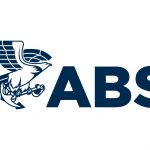According to the company’s release, Seaspan Shipyards (Seaspan) launched the Canadian Coast Guard’s flagship science vessel, CCGS Naalak Nappaaluk, Canada’s newest and most modern research vessel.
This is the fourth ship designed, built, and launched by Seaspan under the National Shipbuilding Strategy.
The Offshore Oceanographic Science Vessel (OOSV) is a floating laboratory that will serve as Fisheries and Oceans Canada’s primary oceanographic science platform. As a Polar Class 6 vessel, it will be a highly advanced ice-capable ship equipped with the latest scientific research systems.
The new ship will provide increased capability and capacity to support marine surveys and scientific research on ocean currents and the seabed in Atlantic Canada. It will also contribute directly to improving our understanding of climate change’s impact on the oceans.
The future CCGS Naalak Nappaaluk is named after a well-respected elder from Nunavik, who was a renowned promoter of the Inuit language and culture. The vessel will be stationed in Dartmouth, Nova Scotia, accommodating up to 34 crew and 26 scientists. The data and samples collected aboard this vessel will support Canada’s domestic and international commitments to ensure that our oceans are sustainably managed. The 88-metre-long vessel is outfitted with a modular working deck, a marine mammal observation station, an ocean sampling room, an oceanographic winch, as well as permanent and portable labs. The ship can also perform search and rescue operations and environmental response when needed.
The new OOSV replaces the venerable CCGS Hudson, which entered service in 1964 and was the longest-serving ship in the Canadian Coast Guard fleet. CCGS Hudson was decommissioned in 2022 following an illustrious 59 years of service supporting ocean science work in Canada and around the world. In preparation for the CCGS Naalak Nappaaluk sea trials and delivery to the CCG, the ship will sit dockside at Seaspan’s Vancouver Shipyards while it undergoes final outfitting.
With a design displacement 5,058, the OOSV will be 88 meters long and 17.6 meters wide and accommodate up to 60 personnel.
The OOSV will be Fisheries and Oceans Canada’s primary oceanographic science platform, outfitted for habitat management, marine surveys, and scientific research on ocean currents and the seabed while also being able to serve the needs of the Canadian Coast Guard, aiding in operations such as Search and Rescue.
Seaspan, a division of Seaspan ULC, is a leader in Canada’s ship design, engineering, building, and ship repair industry.
Source: Port News






